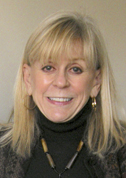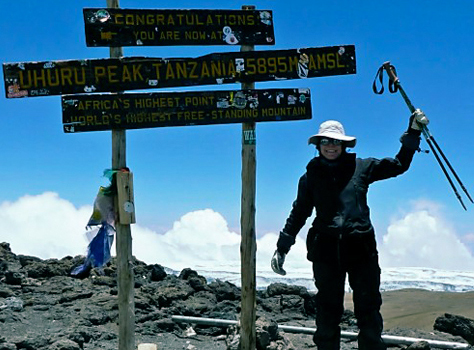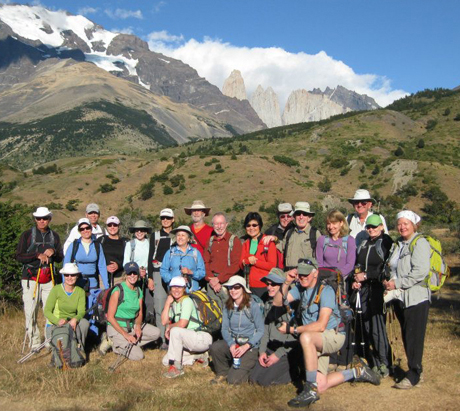© 2013 The Texas Lawbook.
By Patricia Baldwin
Lifestyle Writer for The Texas Lawbook
A member of the Texas Legislature once told Jody Richardson that, if she wanted to talk to him, she would have to run. And he took off at full speed down a Capitol hallway. With eight marathons on her vita, the lobbyist not only kept up the pace, she had her say. Challenges obviously energize Richardson who is Of Counsel with Allen Boone Humphries Robinson in Austin. For example, for her 60th birthday two years ago, she climbed Kilimanjaro in Tanzania.

And while such international summits offer special adventures, her current passion of a pastime is “highpointing” closer to home. Highpointing for Richardson means ascending the highest mountain in each state. Current domestic score: 30 peaks out of the 50.
“I predict I will be a ‘48-completer,’” Richardson says. With that accomplishment, she also forecasts, “I will feel fabulous. I will feel like I won the lottery. I already feel so lucky that I can do this and that I enjoy doing this.”
The public finance attorney’s fascination with mountain climbing, however, is getting ahead of this story. Her proclivity for uphill challenges began in college (she graduated in three years from the University of Texas at Austin) and continues in the current legislative session (where, among other things, she is working toward the creation of municipal water districts).
Friends and associates are not surprised at Richardson’s undertakings. Attorney Mary Nichols characterizes Richardson as “very adventurous.”
Nichols, general counsel and senior vice president of Austin-based Texas Mutual Insurance, is also a former Vinson & Elkins colleague of the lobbyist. She adds, “Nothing stops her. She’s not afraid. Jody is one of the most multi-talented people I’ve ever known. She’s artistic and a great lawyer.”
Richardson notes that life’s challenges – and opportunities – have prepared her for both literal and figurative mountains. A capsulized resume of the “Army brat” from El Paso includes such eclectic endeavors as writing (in Spanish) for a Mexican rock ‘n’ roll magazine, working as a television reporter and anchor, and serving a stint with the famed Hollywood producer David L. Wolper (as a documentary assistant for the TV miniseries “Roots”).

the highest peak of Kilimanjaro in Tanzania.
Richardson was introduced to the concept of odd-numbered years and the Texas Legislature in 1977 when she became a lobbyist for the Texas Women’s Political Caucus.
Conversation in the Capitol hallways often included the question: Where did you get your law degree?
Again, serendipity played its role in Richardson’s career path. Jo Clifton, a friend from El Paso who worked for State Senator Bill Patman (1927-2008), told her about the LSAT test.
Richardson remembers her first response as: “What’s the LSAT?”
Subsequently, both she and Clifton passed the law school entrance exam. They both applied only to the UT law school. They both received acceptance notices.
Richardson recalls that Clifton proposed, “Let’s go.”
Well, why not …
Clifton, editor of “In Fact Daily,” an online political newsletter owned by the Austin American-Statesman, is flattered that Richardson credits her with her decision to attend law school.
“I remember we were both ambivalent,” Clifton says. She notes that Richardson “takes advantage of opportunities when they come up. She’s also very dedicated to whatever she’s doing.”
That dedication extends to planning her life around the legislative session, Clifton adds. “I recently asked her when we could go to lunch, and she said ‘June.’”
Upon law school graduation in 1980, Clifton joined the Austin city attorney’s office. Richardson joined Vinson & Elkins in Houston.
“I thought I would be a litigator,” Richardson says, but her expertise evolved into public law and, in late 1984, she moved to the V&E Austin office. In 1991, she joined Akin Gump Strauss Hauer & Feld and, in 2008, she joined Brown McCarroll. In 2010, she joined ABHR, a firm that had been formed in 2003 by former V&E colleagues.
Much of Richardson’s time in this legislative session is devoted to municipal utility districts – the way land developments acquire their water and sewer infrastructure. She notes that, through the legislative process, water districts can be created with “more latitude and flexibility” for the developer, resulting in better quality subdivisions.
She clarifies, “As to special purpose districts, there are several types with different acronyms. But, generally speaking, they are similar in that they provide for the public financing of infrastructure. We are seeing a renewed interest among land developers and expect some 60 or so projects to work on this session.”
Among other clients, she represents the Motion Picture Association of America, CBS Outdoor Inc. and Plains All American, a crude oil gathering company that owns trucks and pipelines.
She notes that she is one of few people who know how the “2060 permit” got its name. (Answer: The state-issued permit relating to the travel of overweight trucks was created by a 1989 bill designated with the number “2060.”)
“I am now the guru of overweight trucks,” she jokes.
Conversations with Richardson, however, often find their way back to mountain climbing, which also had its start in happenstance.

In the mid-1990s, she and her former husband traveled for a couple of family commitments. In searching for hiking trails, they discovered they were in the vicinity of the 3,491-foot Greylock in Massachusetts and then the 2,301-foot Eagle Mountain in Minnesota. They became hooked on climbing.
Once the couple had climbed three peaks, they decided they had a “collection” and started planning summer vacations around highpointing.
One of the scariest moments came when a summer storm caught up with the couple. When they shared a piece of chewing gum, they felt a spark from nearby lightning on the gum’s foil. Down the mountain they went – on their bottomsides. Highpointers unceremoniously call this “butt sledding.”
When Richardson’s 15-year marriage ended in 2005, she lost a tent in the divorce settlement. However, she kept “everything else” that she needed for mountain climbing. She also had 14 peaks checked off the list on the clipboard she keeps in her office.
Such accomplishments, she says, have “helped me learn about myself. I never in a million years would have dreamed that I would enjoy it so much.”
And so she heads toward the magic number of 49 or maybe 48.
Richardson comments that, while a highpointer’s ultimate goal is to be a 50-completer, she already has decided she will not climb the 20,320-foot Mount McKinley in Alaska, ranked the most difficult U.S. mountain. Hovering at “maybe” is the 14,411-foot Mount Ranier in Washington.
On her calendar for summer are Borah Peak in Idaho, Granite Peak in Montana and Gannett Peak in Wyoming – ranked sixth, third and second in difficulty, respectively.
And while she tends to look into the future, her office wall holds proud proof of a valued past accomplishment – a framed certificate recording her reaching the top of Uhuru, the highest peak (19,340 feet) of Kilimanjaro in Tanzania. Richardson says she chose to take the slower, western approach (seven days up, two days down) to better acclimate to the altitude.
She adds that the travel to remote locations has provided vacations full of natural wonders and a few man-made attractions. She recalls that, when she finished climbing Mount Davis in Pennsylvania, she had time to visit Fallingwater, the masterpiece home of architect Frank Lloyd Wright.
Her advice for newcomers to the sport of highpointing: Climb the toughest mountains first. Also good counsel for life – and the Texas Legislature.
Do you have a special hobby – or other lifestyle interest – to share? Please email patricia.baldwin@texaslawbook.net.
© 2013 The Texas Lawbook. Content of The Texas Lawbook is controlled and protected by specific licensing agreements with our subscribers and under federal copyright laws. Any distribution of this content without the consent of The Texas Lawbook is prohibited.
If you see any inaccuracy in any article in The Texas Lawbook, please contact us. Our goal is content that is 100% true and accurate. Thank you.
